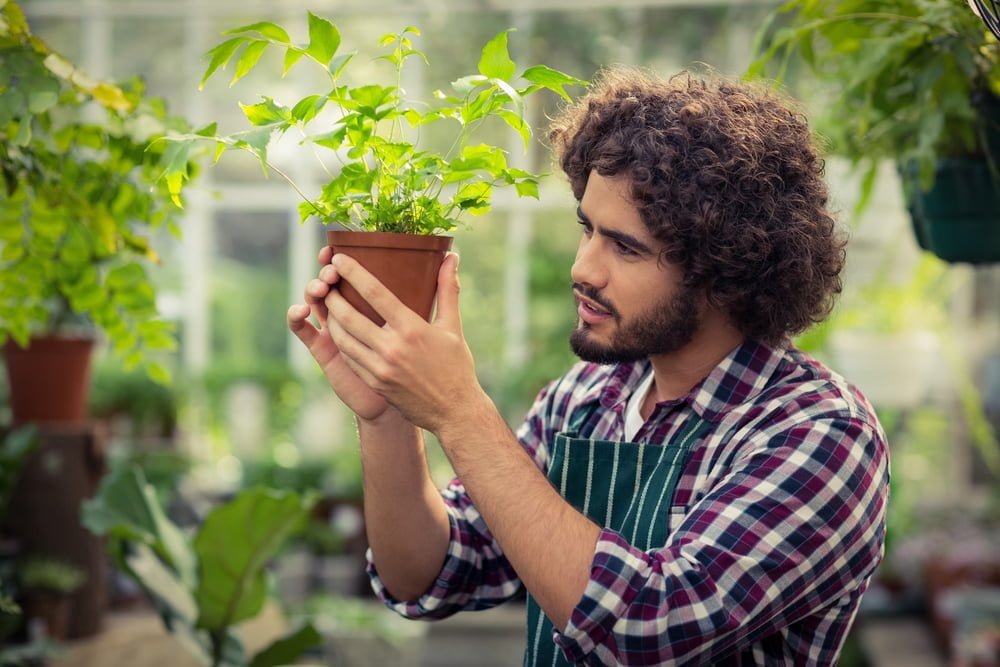Cold weather is coming and your container plants are anxious to seek warmth inside, with you and your family.

Gardeners throughout northern Utah perform this ritual every fall, bringing their container plants inside so they can continue to thrive through the winter.
When to bring yours indoors — and how to prepare them for the transition — depends upon their variety. But, to give you a head start, we’ve put together a handy how-to guide.
When to Bring Container Plants Inside
Many of northern Utah’s most popular container plants really don’t appreciate cold air and wind. These typical winter weather conditions can damage the plants’ leaves and cause flower buds to drop.
Mulching or covering plants can provide some degree of protection but, eventually, they need to come inside or they will likely die.
As a general rule of thumb, you should start the process of bringing your plants inside once the nighttime temperatures dip below 50 to 55 degrees. With many varieties, you’ll need to acclimatize the plant first, so it doesn’t experience shock, wilting or leaf loss from the environmental change.
To acclimatize your plants, keep them indoors only at night. Then, over the course of a week or two, gradually increase the amount of inside time until they no longer go outside at all.
Check for Pests Before Bringing Container Plants Inside
Before moving your container plants indoors, be sure to check for any pests that may have established a home during the summer months. You may have both leaf-dwelling or soil-dwelling bugs – or both – and you don’t want those little critters coming inside with your plants.
Common leaf-dwelling pests include aphids, mealybugs, spider mites, gnats and spiders. Remove these by gently hosing down the plant leaves or submerging the entire pot in a bucket of warm water for about 15 minutes.
Slugs, earwigs, and other soil-dwelling pests also like to infest potted plants. Try removing the plant from the pot and flicking them away or get rid of them with the pot-dunking procedure described above.
Make Sure Your Container Plants Aren’t Pot-Bound
Out in the abundant northern Utah summer sunshine, your plants have probably grown quite a lot since you first potted them. There’s a good chance they may have outgrown their containers, or become pot-bound.
Once the roots have become tightly packed in the soil, potted plants begin to suffer. Potting soil’s nutrients also diminish over time so, if you haven’t been fertilizing and mulching adequately, your plants may need a little nutritional boost as well as room to move.
Symptoms of a pot-bound plant include dense root growth at the surface, frequent wilting and poor-quality flowers. Pot-bound plants may also have smaller new leaves and stunted growth, or a lack of flowers. If any of yours are pot-bound, you will need to re-pot them to ensure they grow well and remain healthy through the winter.
Winter, spring, summer and fall, the friendly and experienced staff at Millcreek Gardens has all the products, gardening supplies and plants you love at our convenient Salt Lake City nursery. Stop by and visit us this weekend and don’t hesitate to ask our helpful team all your questions about indoor gardening and container plants.


